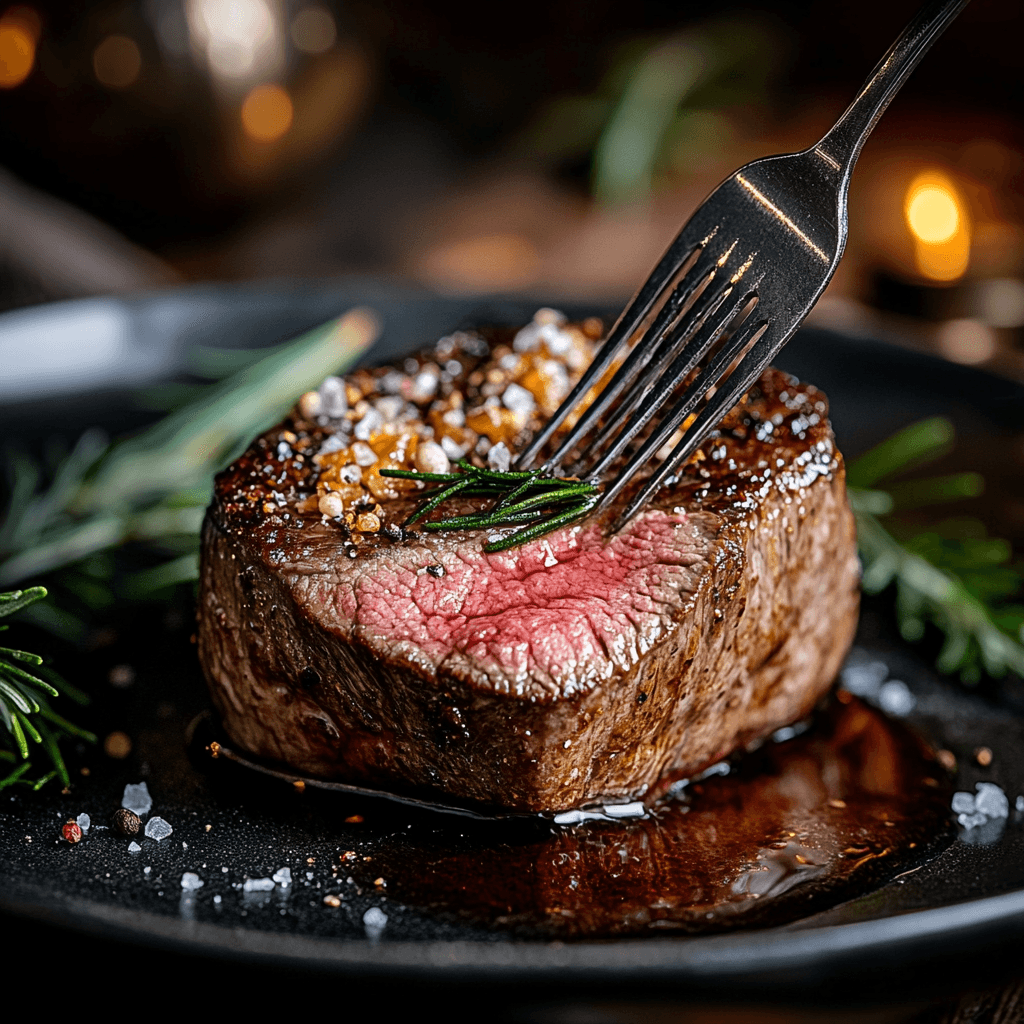Everyone wants to know how to cook tender venison, but misinformation can lead to tough, chewy, and disappointing results. So many home cooks treat this lean, flavourful meat just like beef, which is the fastest path to failure. The truth is, cooking venison is simple once you understand its unique properties. Let’s debunk the myths and reveal the single most important secret for learning how to cook tender venison.
Myth #1: “Cooking it longer will make it more tender.”
This is the single biggest mistake people make. The answer to “Does venison get more tender the longer it cooks?” depends entirely on the cut, a topic we cover in depth in our [Hunter’s Guihttps://gordonramsaymeals.com/best-cut-of-venison-guide/de to Every Cut of Venison].
- For Tough Cuts (like Shank, Neck): YES. These cuts are full of collagen and connective tissue. Cooking them low and slow for hours breaks down that collagen into rich gelatin, making them fall-apart tender.
- For Tender Cuts (like Loin, Backstrap): ABSOLUTELY NOT. These cuts have very little collagen. The longer you cook them, the more the muscle fibers seize up and squeeze out moisture, making the meat progressively tougher, drier, and chewier. This is the most vital principle in knowing how to cook tender venison.
Myth #2: “You need to soak it in milk or buttermilk.”
This is an old-school technique that was used to “tame” an overly “gamey” flavour from improperly handled deer. With modern processing and butchery, this is rarely necessary. A good brine or flavorful marinade will do a much better job of adding flavour and moisture than a simple milk soak ever could.
Myth #3: “You should trim off all the fat.”
While venison is very lean, the little fat it does have is different from beef fat. Venison tallow can have a waxy texture and a stronger flavour some find unpleasant when cooked. It’s wise to trim any thick, hard layers of fat, but don’t obsess over removing every last bit, as some intramuscular fat is necessary for flavour. A good rule is to trim what you can easily see and peel away.
The #1 Secret: Respect the Cut and Control the Heat
The true secret to how to cook tender venison is to stop thinking of it as one thing. It’s two:
- Tender Cuts: Cook them HOT and FAST. Your goal is a perfect sear on the outside and a rare to medium-rare interior. Use a meat thermometer! Do not cook a tenderloin past medium (around 57°C or 135°F). This is the exact technique used for our perfect [Gordon Ramsay Venison Wellington], which relies on a quick, intense bake to keep the meat tender.
- Tough Cuts: Cook them LOW and SLOW. Your goal is to give the collagen hours to melt away into luscious gelatin. Use a slow cooker, a Dutch oven, and plenty of flavourful liquid.
By simply dividing every piece of venison into one of these two categories, you will know exactly how to approach it. Now that you’ve mastered the theory of how to cook tender venison, put it into practice with the ultimate tender-cut recipe and give our [Gordon Ramsay Venison Wellington] a try.



